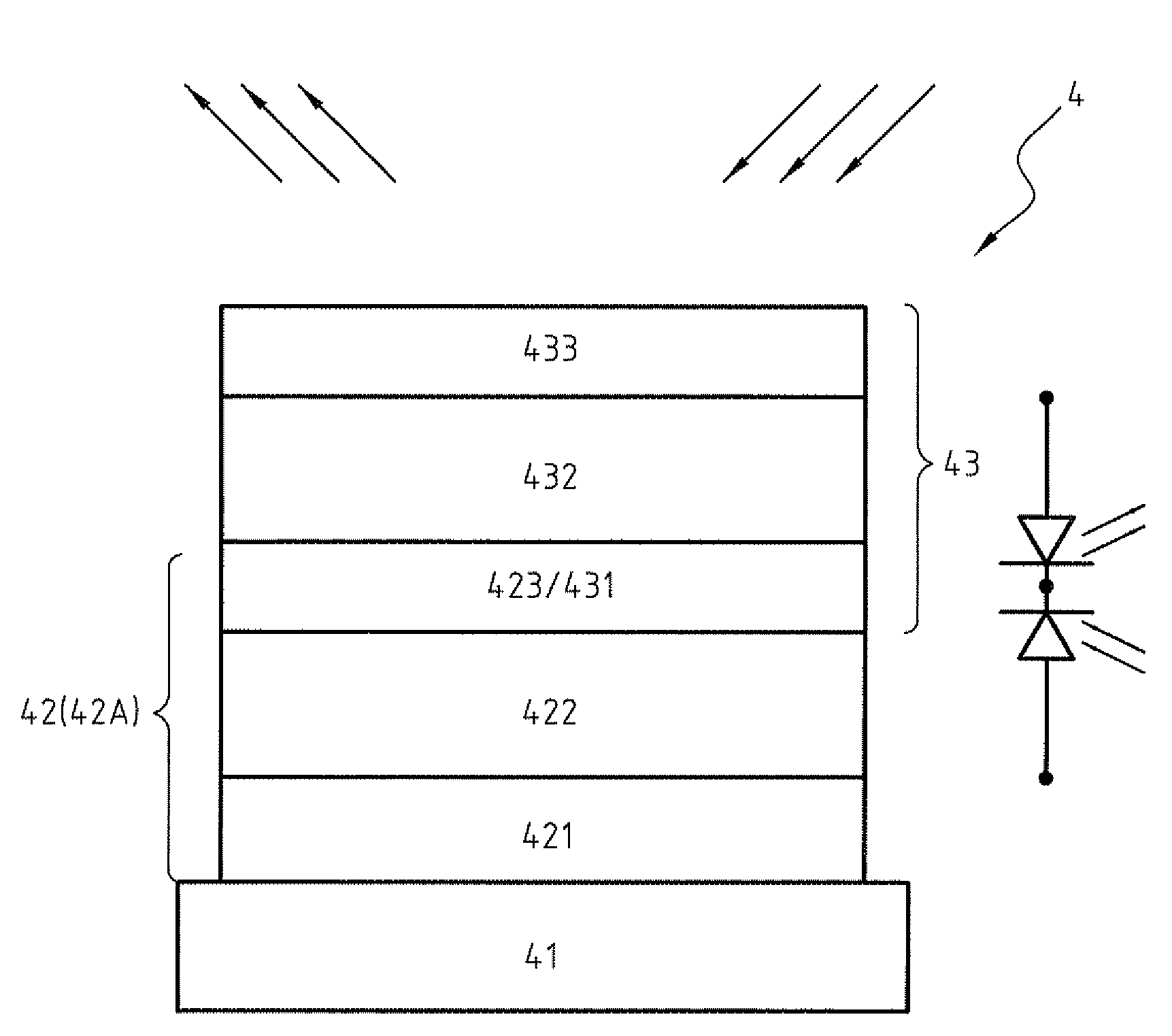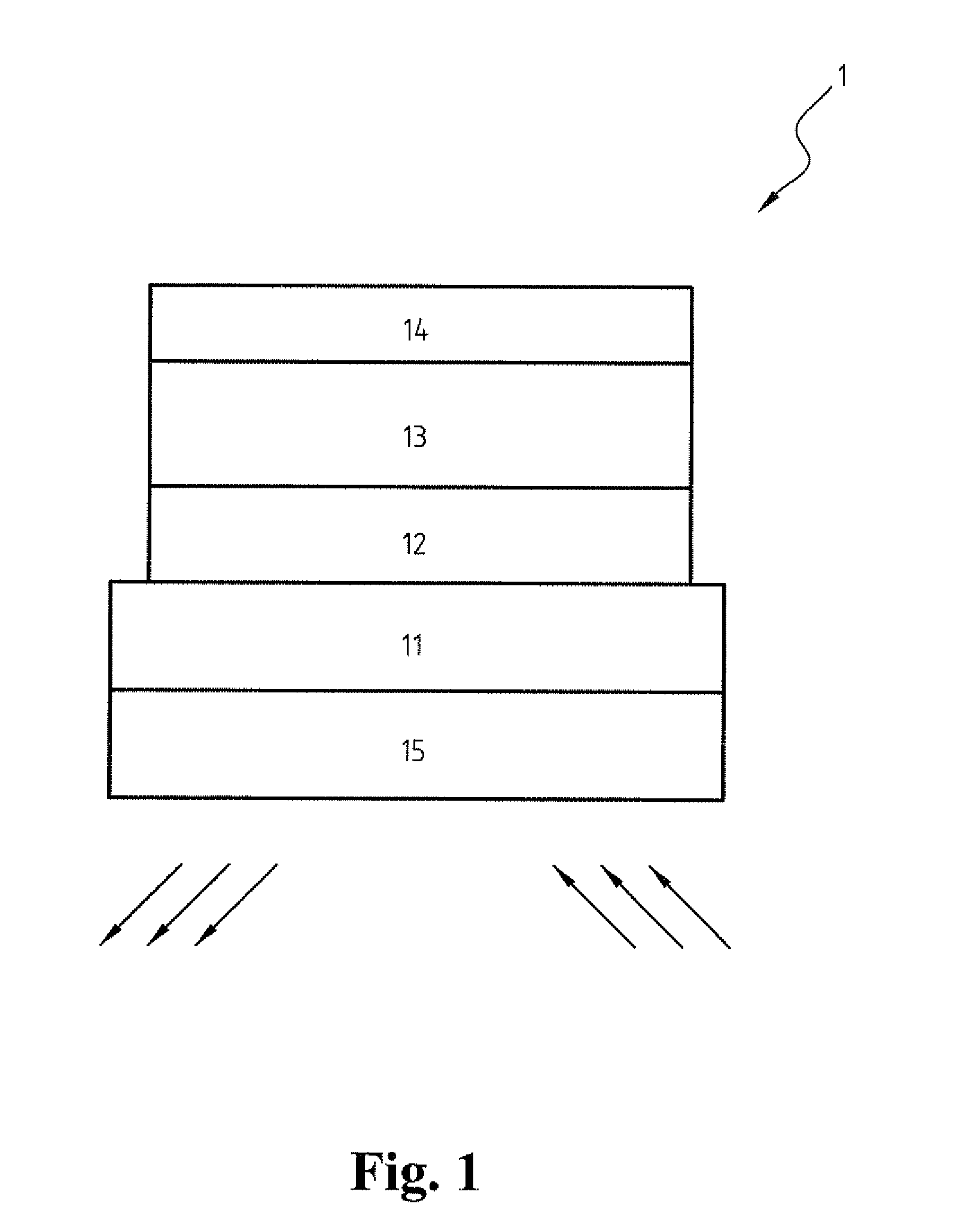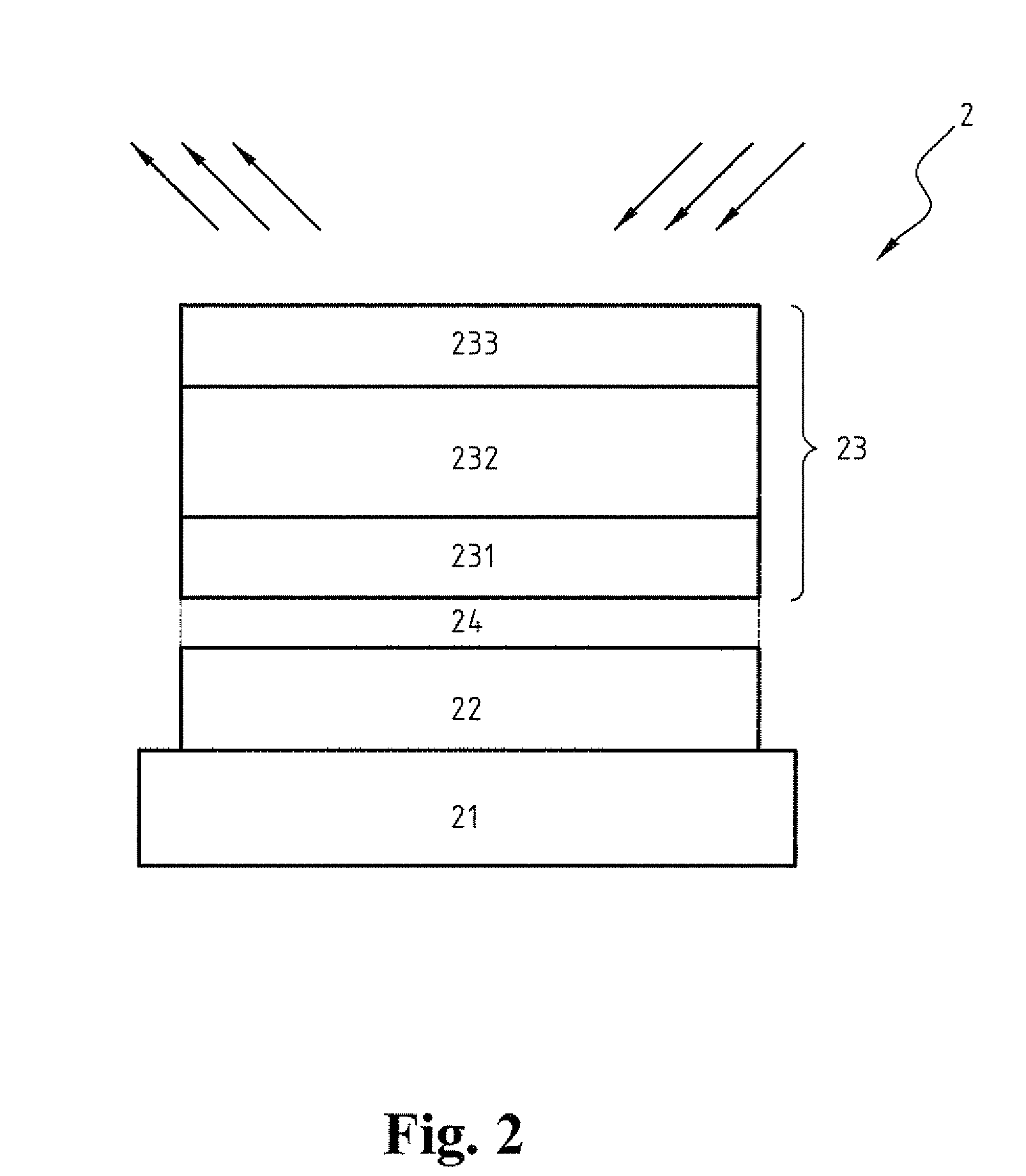One-piece organic light emitting diode display device with an energy-recycling feature and high contrast
a light-emitting diode, energy-recycling technology, applied in the direction of transit-tube circuit elements, cathode-ray/electron beam tube circuit elements, structural circuit elements, etc., can solve the problems of reduced display readability, increased energy loss, shortening the life cycle of products, etc., and achieve high contrast
- Summary
- Abstract
- Description
- Claims
- Application Information
AI Technical Summary
Benefits of technology
Problems solved by technology
Method used
Image
Examples
Embodiment Construction
[0038]With reference to FIGS. 2˜4, 9, 11, 13 and 15, an organic light emitting diode (OLED) (2, 3, 4, 5, 6, 7, 8) display device with an energy-recycling feature and high contrast in accordance with the present invention may be top-emitting or bottom-emitting and comprises a substrate (21, 31, 41, 51, 61, 71, 81), a photovoltaic element (22, 32, 42, 52, 62, 72, 82), a translucent OLED element (23, 33, 43, 53, 63, 73, 83) and an optional insulation layer (24, 34, 64, 74, 84) and mounted against each other to form the OLED display device (2, 3, 4, 5, 6, 7, 8).
[0039]The substrate (21, 31, 41, 51, 61, 71, 81) may be semiconductor material, glass, metal, insulated material or a thin-film transistor circuit board (85) and has a top surface.
[0040]The photovoltaic element (22, 32, 42, 52, 62, 72, 82) may be mounted on the top surface of the substrate (21, 41, 71), converts light with wavelengths from 200 to 2000 nm striking the photovoltaic element (22, 32, 42, 52, 62, 72, 82) to electricit...
PUM
 Login to View More
Login to View More Abstract
Description
Claims
Application Information
 Login to View More
Login to View More - R&D
- Intellectual Property
- Life Sciences
- Materials
- Tech Scout
- Unparalleled Data Quality
- Higher Quality Content
- 60% Fewer Hallucinations
Browse by: Latest US Patents, China's latest patents, Technical Efficacy Thesaurus, Application Domain, Technology Topic, Popular Technical Reports.
© 2025 PatSnap. All rights reserved.Legal|Privacy policy|Modern Slavery Act Transparency Statement|Sitemap|About US| Contact US: help@patsnap.com



